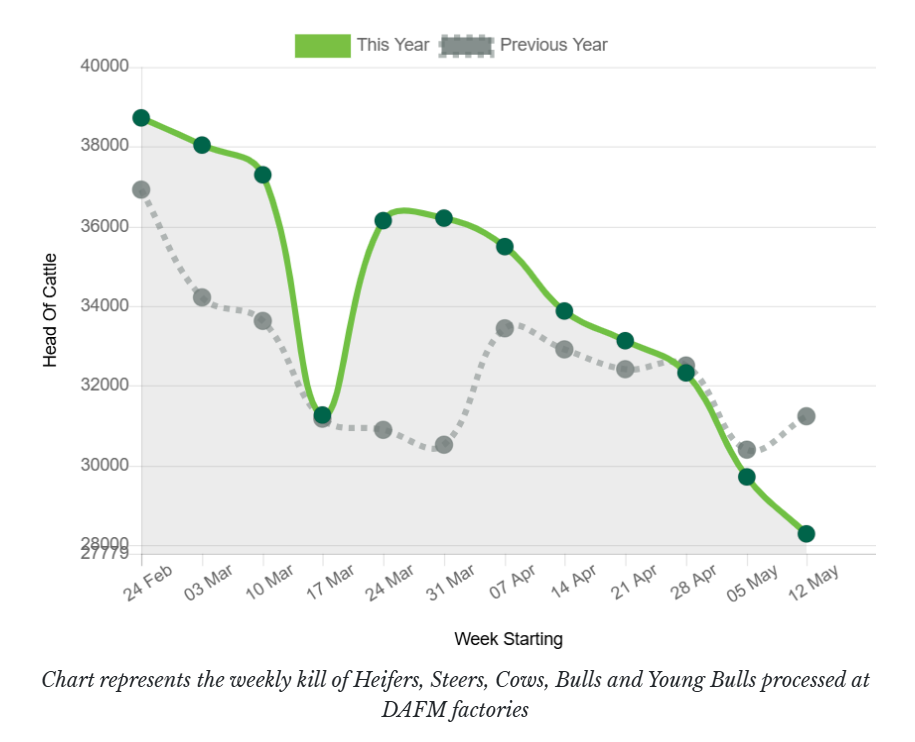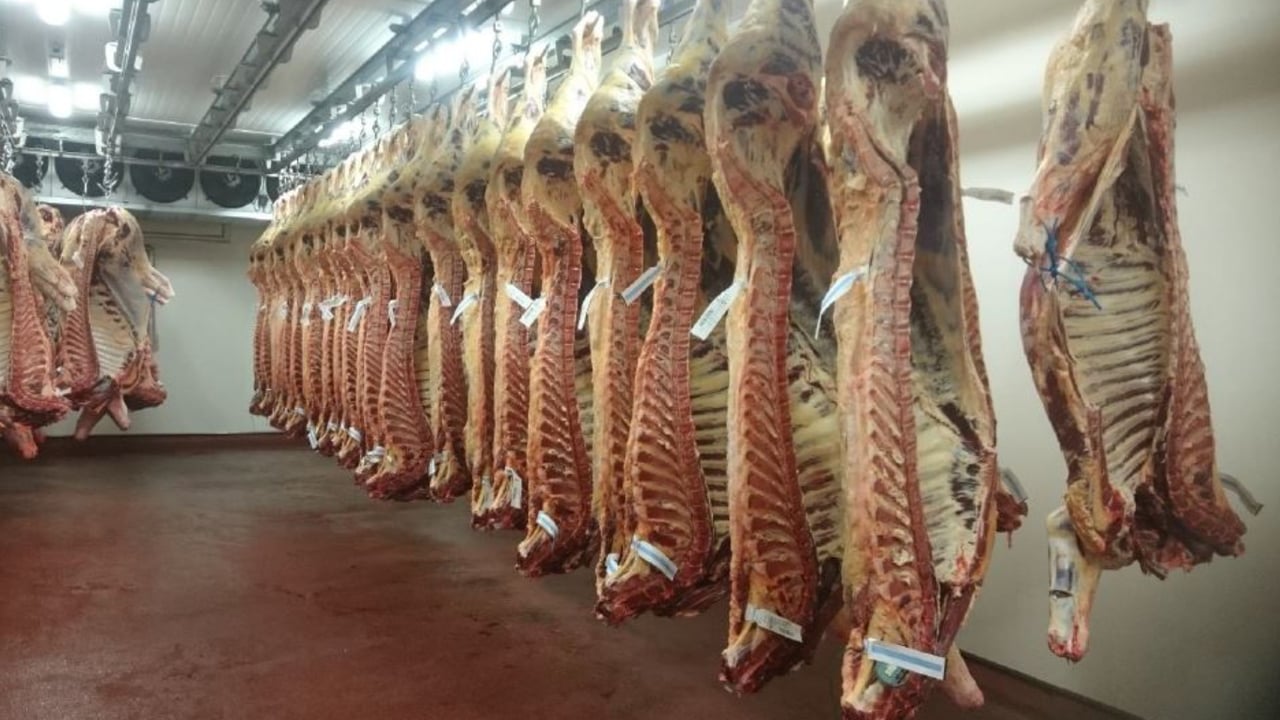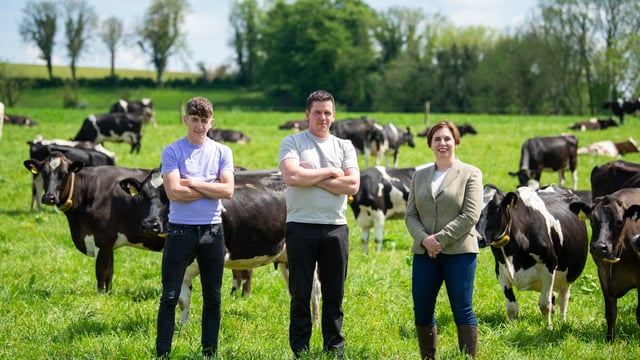Beef kill: Tight cattle supply becomes more apparent
The beef kill figures for the week ending Sunday, May 18, show the forecasted decline in factory cattle supplies for this year has started to materialise.
It was initially expected that the majority of the forecasted decline in factory cattle supplies of 87,000 head for this year would become apparent in the first half of the year.
However, until now, weekly factory cattle supplies (excluding veal) have been running above or on-par with corresponding weeks of last year.
Just under 28,300 cattle were slaughtered at Department of Agriculture, Food and the Marine (DAFM) approved factories in the week ending Sunday, May 18, a decline of almost 3,000 head of cattle from the same week of last year.
The graph below shows how weekly beef kill numbers this year have been comparing to last year:

While supplies have now started to show a decline, the cumulative beef kill to date this year now stands at just over 694,000, which is almost 22,000 cattle above the kill numbers from this time last year.
This trend, coupled with the forecasted drop in available factory cattle numbers for the year, would suggest the total 2025 beef kill could be up to 100,000 cattle below 2024.
Processors are well aware of the reduced availability in cattle supplies and are having to reduce the number of days they are killing in many cases and pressure remains even to fill out the reduced number of spaces on weekly kill sheets.
The table below details cattle supplies in the week ending Sunday, May 18, compared to the same week of last year, and the cumulative kill to date this year compared to last year:
| Category | Week ending Sun, May 18 | Equivalent Last Year | Cumulative 2025 | Cumulative 2024 |
|---|---|---|---|---|
| Young Bulls | 1,992 | 2,456 | 46,369 | 47,619 |
| Bulls | 541 | 669 | 9,529 | 9,950 |
| Steers | 10,924 | 12,192 | 255,218 | 244,791 |
| Cows | 5,631 | 6,956 | 156,758 | 167,848 |
| Heifers | 9,191 | 8,959 | 226,598 | 202,347 |
| Total | 28,279 | 31,232 | 694,472 | 672,555 |
The reduced supply is coming from the young bull, steer and cow kills, while the weekly heifer kill is remaining strong at over 9,000 head.
After a number of challenging years, some farmers have described 2025 to date as 'a textbook year for farming' with good weather conditions and strong prices to date.
While it remains to be seen how the second half of the year will materialise as regards prices and weather conditions, most beef industry stakeholders remain hopeful that markets will continue to perform strongly and are optimistic that the beef trade will remain in a positive position.





